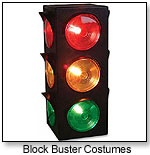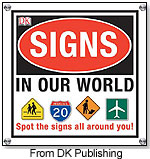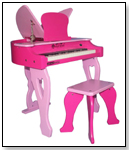|
|
Event Marketing Guru’s Corner: Green Means Go Learning to Read and Respond to Prospects’ Buying Signals Buying signals are all around us. We just have to learn to recognize them. They’re very much like a traffic light — red, yellow and green signals to stop, proceed with caution, or continue. Buying signals are all around us. We just have to learn to recognize them. They’re very much like a traffic light — red, yellow and green signals to stop, proceed with caution, or continue.One of the biggest problems booth staffers encounter is missing their prospect’s buying signals. The solution resides in the following: 1. Listen carefully for verbal buying signals, such as terse questions that might feel like objections. Usually, this means the prospect is digging for more information and presenting a sales resistance wall. He or she is still standing there for a reason.
Narrow your questions (talking 20 percent of the time and listening 80 percent of the time) to obtain increasingly specific information. Eventually, you’ll get to, “Please, share with me some of the challenges you’re facing in regard to your current solution.” This is how you identify the current area of pain — “the problem.” Without knowing the problem, how can you position your offering as an optimal solution? 3. Guide the conversation with probing questions. Allow the prospect to feel in control of the buying cycle at all times. 4. Watch for nonverbal buying signals. The thumb and index finger massaging the chin of the prospect is always a certain nonverbal buying signal (yellow, more times than not). 5. Tune in to interpret the prospect’s signals. For instance, if a customer is leaning toward you and making strong eye contact, that is a probable green signal. Nodding the head or carefully reading your brochure are other examples. Another example of a green signal is when prospects ask “how to” questions. If you receive a green signal, a long sales pitch is unnecessary and may very well persuade the prospect to change his or her first generous impulse and cancel the sale. Tone of voice almost always gives the red signal, as do folded arms or crossed legs. A serious expression followed by a few meaningful responses to your questions indicates a probable decision not to buy. Yellow (“I’m on the fence”) signals are the easiest to detect. You must put yourself in the prospect’s shoes and slowly educate the prospect as to what truly makes your offering unique, significant and valuable from his or her standpoint. 6. Be cognizant to differentiate buying signals from closing signals. Another huge mistake that event marketers make is attempting to close too early before adequate value is established in the prospect’s mind.  A buying signal says, “Continue to lay forth the reasons I should invest in this offering.” Keep building your case, as if the prospect were a jury, as to how you stack up versus the rest of the pack in your product/service category. A buying signal says, “Continue to lay forth the reasons I should invest in this offering.” Keep building your case, as if the prospect were a jury, as to how you stack up versus the rest of the pack in your product/service category.A closing signal is a definitive implication that the prospect is ready to move forward with a final decision. This is always best facilitated through a series of minor either/or questions. Keep the decisions minor at this stage. People hate to make BIG decisions. If the offering is right for them, you’re role is not that of the seller. Rather, it is that of the assistant buyer — to ensure that you tailor your solution for the customer in the optimal manner, given his or her unique needs/objectives.  Writer's Bio: Charles W. Allen is an independent consultant for professional event marketing solutions and specializes in sales training, motivational speaking and maximizing sponsorship sales. He also serves as executive director of the International Economic Alliance, which originated at Harvard University. Read more articles by this author Writer's Bio: Charles W. Allen is an independent consultant for professional event marketing solutions and specializes in sales training, motivational speaking and maximizing sponsorship sales. He also serves as executive director of the International Economic Alliance, which originated at Harvard University. Read more articles by this author |
| |||||||||||||||||||||||||||||||||
Disclaimer Privacy Policy Career Opportunities
Use of this site constitutes acceptance of our Terms of Use.
© Copyright 2026 PlayZak®, a division of ToyDirectory.com®, Inc.



